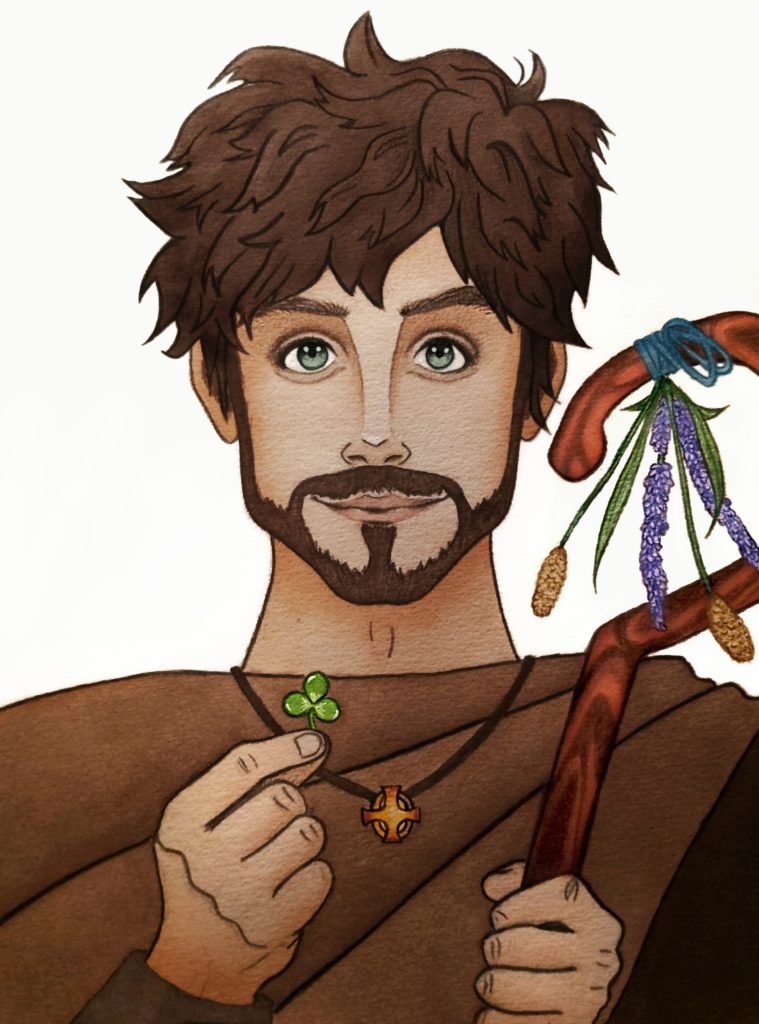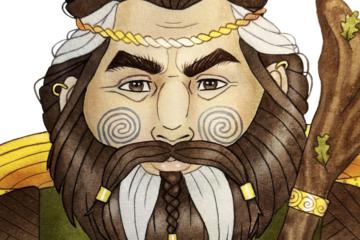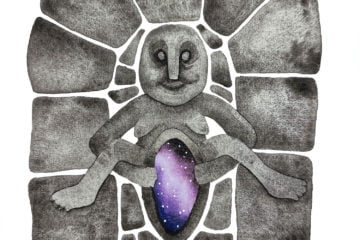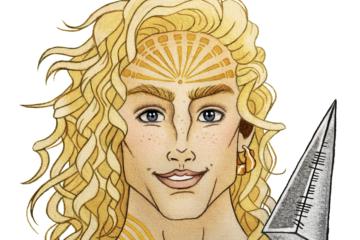
When I picture Saint Patrick, my mind does not go to the classic image of an old bearded man wearing a Bishop’s robes. Instead, I see a young man, dressed simply as a slave would be, sitting on a mountainside watching the sheep of his master. I also think of how amicable he must have been, to have been permitted to preach a foreign religion so widely in a land steeped with ancient pagan beliefs and tradition, and to have been embraced instead of murdered.
The year that Patrick is said to have arrived in Ireland was 432. Many people today believe that he was the first Christian preacher to arrive on Irish shores, but in fact he was the second. A Roman bishop named Palladius was sent to Ireland in 431 to convert the country to Christianity. Palladius has been largely forgotten by history, but it is likely that he had many accomplishments that are now attributed to Patrick.
Capture and Enslavement
It is not known where exactly in Roman Britain that Patrick was born, but most believe it was somewhere in Wales. He came from a family of religious leaders as his father was a deacon and his grandfather was a priest, but Patrick himself was not an active believer.
When Patrick was sixteen, he was captured by Irish pirates, who brought him across the sea and sold him into slavery. He was enslaved for six years, during which time he became fluent in the Irish language as he tended sheep for his master on Slemish mountain in Co Antrim. It was during these years that Patrick also developed a strong faith as he prayed and talked to God on the mountainside. I can only imagine that practising his family’s faith made him feel closer to home when he found himself in a foreign country surrounded by non-christians.
Escape to Britain
The story goes that after six years, Patrick heard a voice that told him that his ship was ready, and that he would soon go home. He fled his master and made his way to a port two hundred miles away, where he found a ship ready to leave. He spoke to the captain, who reluctantly agreed to ferry him home. Three days later they arrived in Britain.
When Patrick and the crew came ashore, they are said to have become lost in the wilderness for 28 days. Patrick turned to God and prayed for food to save them, after which a herd of wild boar appeared, which amazed the starving crew members. With his faith further strengthened, Patrick made his way back to his parents and over the coming years he continued to study Christianity.
Return to Ireland
In Patrick’s account of his life, he wrote that some years after returning to Britain he had a vision. In this vision he heard the voice of the people of Ireland appealing to him to return to Ireland and walk among them. Patrick took this to be a message from God and he returned to the land where he had been a slave, this time as a Christian missionary.
Legends of Patrick
There are a number of very famous legends associated with Patrick after his return to Ireland. A favourite around the world is the story of his use of shamrocks as illustrations of Christian doctrine. The story goes that Patrick would use the little three-leafed plant to show how there could be three people making up one God.
The use of this common plant may have been important to the pagan Irish in their conversion to Christianity. Triple deities were already a common feature of their faith, as was nature and the turning of the seasons. Using an already familiar idea in a Christian context would have sped up the process of their conversion significantly, an idea which we see repeated countless times in Christianity.
The other famous legend involving Patrick is the banishing of the snakes from Ireland. This story is not true, as Ireland is documented as already being snake-free prior to his arrival. Rather, this is a later addition to his story that illustrates the end of Paganism in Ireland while also calling up biblical imagery of the prophet Moses. Making Patrick seem all the more holy.
Writings of Patrick
Patrick left behind two writings, written by him in his own words, that we can still read today. These are the ‘Confessio’ and the ‘Epistola’. With opening lines like ‘my name is Patrick and I am a sinner,’ these writings give us a really fascinating insight into the real man, and portray a reflective, introspective and truly pious person.
The ‘Confessio’ is an autobiographical letter, written near the end of his life, in defence of unnamed charges against him. In the Epistola, also known as the ‘Letter to the Soldiers of Coroticus’, Patrick pleads with Coroticus and his army to release baptised Christians that they had captured.
In Modern Times
Today, Patrick is a Patron Saint of Ireland, along with Saint Brigid. His feast day is the 17th of March, and it is celebrated all over the world due to its synonymity with Ireland. Though Christian faith is waning in Ireland today, Saint Patrick’s Day is a festival that is never likely to die out due to it’s cultural importance.
Patrick himself is a beloved figure in Ireland. He is surrounded by myths and legends, some rooted in truth and some rather more fanciful. An endlessly interesting figure, I really encourage you to read his ancient writings, as they are an incredibly surreal glimpse into life in 5th century Ireland.


